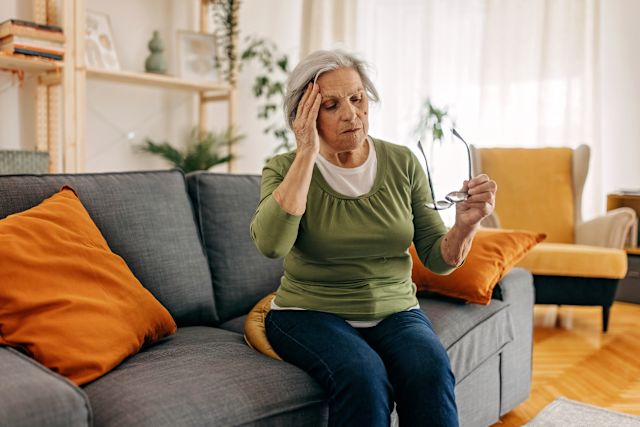Updated on May 28, 2024.
When a stroke occurs, quick action can mean the difference between life and death, consciousness and coma, mobility and paralysis.
The clot or bleeding that causes a stroke reduces blood flow to the brain. Prompt treatment is necessary to reduce the chance of permanent brain damage. The sooner the person who has a stroke can get to the hospital—ideally within minutes of when symptoms start—the sooner they will have access to treatments and the better their outlook.
But many people are not aware of stroke signs and are unable to tell when a stroke is happening. Are you one of them? Could you tell if you or someone else was having a stroke? Take this quiz and find out.
Question 1: Making sense of subtle symptoms
Jessica is a healthy 36-year-old woman. She wakes up one morning feeling groggy, with clammy hands. She feels a little dizzy and has pins and needles in one of her legs. A few hours pass and these symptoms go away. Could they signal a stroke?
a. Yes, this could be a stroke
b. No, this doesn’t sound like a stroke
Answer: Yes. Jessica’s feelings of dizziness and the tingling in her leg could be symptoms of a transient ischemic attack (TIA). Sometimes called a "mini stroke," a TIA is a warning that you could have a stroke in the near future. Symptoms like sudden loss of vision, weakness on one side of the body, and difficulty speaking and/or walking (as well as the ones Jessica experienced) may last minutes or hours and then pass.
Though older adults are at highest risk of stroke, younger people can have strokes, too. Roughly one-third of people who are hospitalized for stroke in any year are under the age of 65.
Question 2: Responding to a possible stroke
Julius, a 70-year-old man who smokes and has high cholesterol, has a pounding headache. He begins having slurred speech and his vision becomes blurred. What steps should Julius take?
a. Take some aspirin and rest
b. Make an appointment with his healthcare provider
c. Call 911
Answer: Call 911. Julius is displaying three stroke warning signs: headache, slurred speech, and blurred vision. And he has three risk factors that make him more likely to have a stroke: his age, his tobacco habit, and his cholesterol level.
Stroke risk doubles every decade over age 55. High cholesterol can cause arteries to narrow and decrease blood flow to the brain, increasing the risk of stroke. Tobacco use also causes blood vessels to narrow, which can increase blood pressure and, in turn, stroke risk.
Question 3: A bout of scary symptoms
Claire, age 65, suddenly starts shaking and convulsing in her office and her heart rate speeds up. Is she having a stroke?
a. Yes, this is exactly what a stroke looks like
b. No, this sounds like it's something else
Answer: No. Sudden body movements like shaking and convulsing are not typical stroke symptoms. Claire may be having a seizure, however, so she needs prompt medical attention. In addition, because Claire is over age 60, an unexplained seizure could put her at an increased risk for stroke.
A key 2004 study in The Lancet found that a first-time seizure after age 60 means an almost threefold higher risk of stroke. More recent studies have confirmed a strong link between “late-onset” seizure and stroke risk.
Question 4: Don’t overlook signs in children
Ethan, age 12, is outside playing an aggressive game of basketball. After a couple of hard knocks, he tells his friends he cannot feel his arm and has no control over it. He goes home and tells his parents that his arm feels "heavy." What should Ethan’s parents do?
a. Make an appointment with the pediatrician
b. Wait a few days to see if his symptoms go away
c. Call 911
Answer: Call 911. Although strokes are uncommon in children, they do occur, and younger patients may try to ignore or rationalize their symptoms. Tearing, or dissection, of an artery is one potential cause of stroke in young people. It can result from sudden twisting or trauma to the neck or head, which then closes off blood supply to parts of the brain.
Remember B.E. F.A.S.T. to recognize the signs of stroke
If you suspect a stroke, acting fast is key because earlier treatment means better odds of recovery. Think B.E. F.A.S.T. to spot the signs:
- Balance: Is the person suddenly uncoordinated or having trouble with balance?
- Eyes: Is the person having suddenly blurred or double vision, or sudden, painless vision loss in either or both eyes?
- Face: Drooping or numbness on one side of the face is a common stroke sign. Ask the person to smile and see if the smile is uneven.
- Arms: Is there arm weakness? Ask them to raise both arms. Does one arm drift down?
- Speech: Slurred speech is also a stroke sign. Ask them to repeat a simple phrase, such as “The sky is blue.” Can they do it?
- Time: If any of these signs is present, call 911 immediately. Call even if the signs go away. There may have been a mini-stroke, which can warn of a bigger stroke to come.
Why do stroke signs and symptoms vary?
Strokes affect people in different ways depending on the type of stroke, the area of the brain affected, and the extent of the brain injury.
A stroke can affect speech, motor activity (body movement), cognitive ability, behavior, memory, and/or emotions. Paralysis or weakness on one side of the body is common, and in many cases, the person may fall.
But a stroke does not have to produce severe symptoms to cause damage. A patient may experience only mild dizzy spells, loss of balance, or numbness and they may attribute the symptoms to something else.
Know the signs and act fast
Stroke is treatable, but the window for effective treatment is brief. Learn to recognize the warning signs. If a stroke is suspected, dial 911 immediately. Don't wait to see if the symptoms go away. Time is crucial to save brain cells—and lives.







